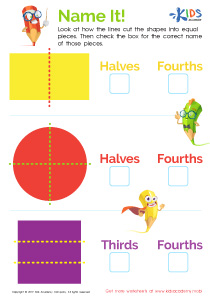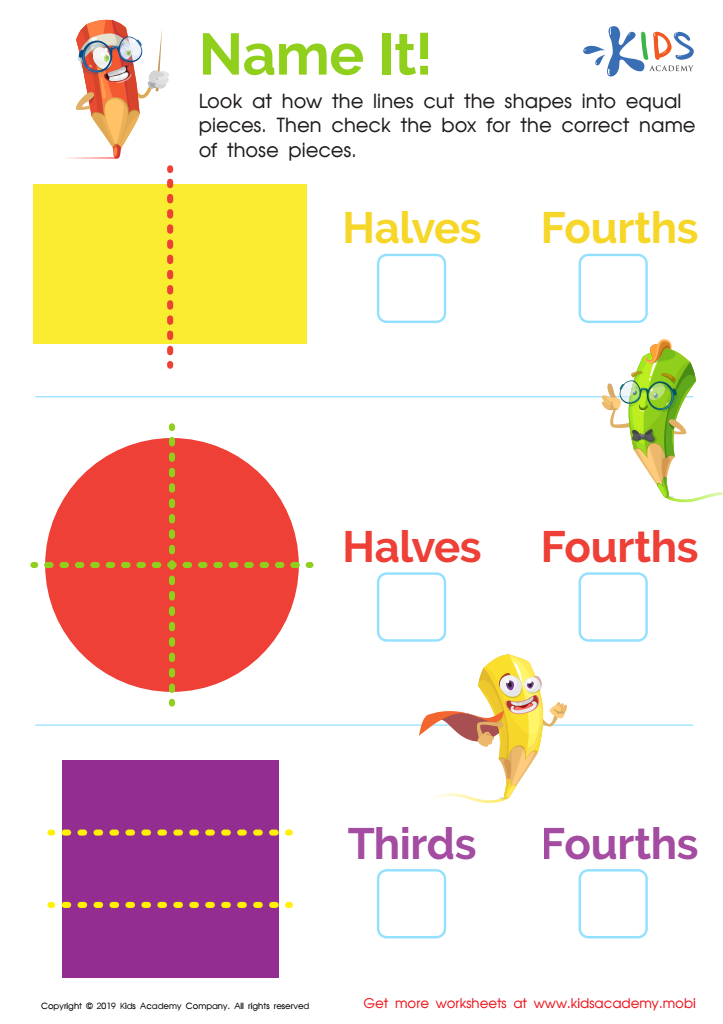Math Lesson - Enrichment, Fractions and Shapes, Grade 2
In the "Enrichment" lesson, designed specifically for second graders under the Geometry unit focusing on "Fractions and Shapes," students will delve into the fascinating world of geometry, discovering how it shapes the world around us. Through the engaging "Name It! Worksheet" activity, learners will embark on a journey to identify various geometric shapes and understand basic fractions, an essential foundation for their mathematical development.
Why is this important? Grasping the concepts of fractions and shapes at this early stage is crucial for several reasons. Firstly, it enhances spatial reasoning skills, allowing students to visualize and understand the spatial relationships between objects in their environment. This skill is not only foundational for advanced mathematical concepts but also critical in daily life tasks and future career paths such as engineering, architecture, and design.
Secondly, understanding fractions lays the groundwork for comprehending more complex mathematical operations encountered in higher grades, such as division, ratios, and proportions. It fosters logical thinking and problem-solving abilities, equipping students with the skills to tackle real-world problems efficiently.

-
Activity 1 / Name It! Worksheet
When you're teaching about fractions, one of the most important things you want to share with your child is that fractions are groups that are divided into equal pieces. When they're working with higher-level fractions, that equal piecing part will be important as they learn about denominators and numerators, so making sure they have good picture representation to refer to is vital. This colorful and free fraction worksheet will let your child see what shapes divided into equal parts look like, and let them choose from halves, thirds and fourths to decide what picture is shown.






